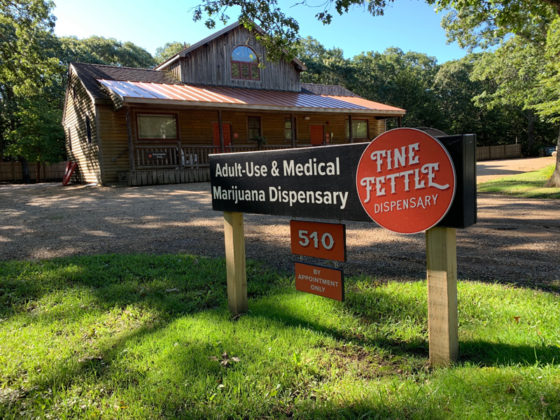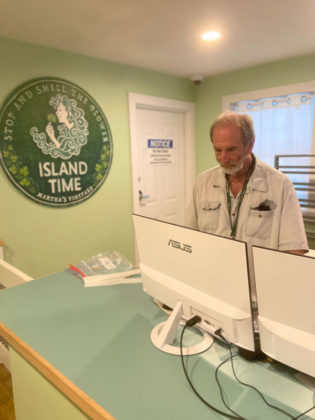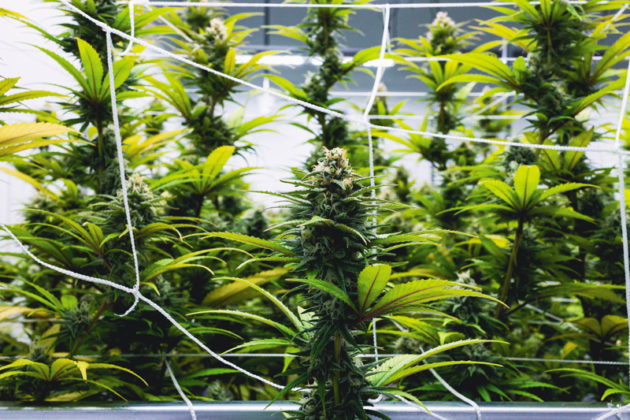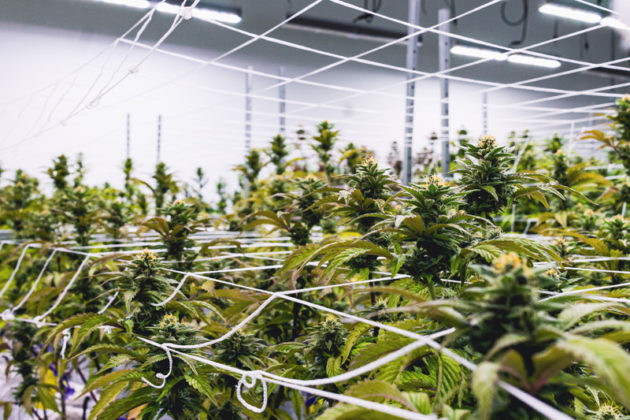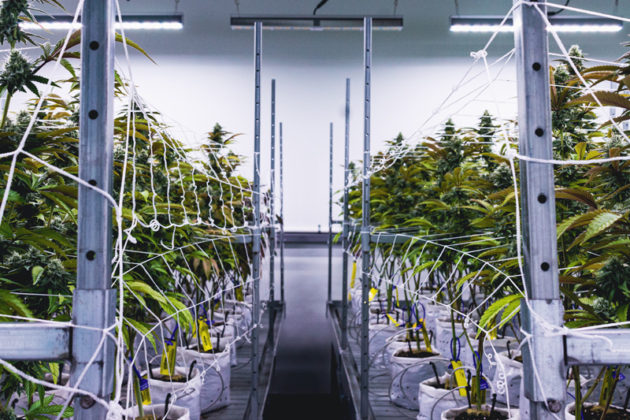With two recreational and medical cannabis dispensaries on the Island, Fine Fettle and Island Time, the pungent plant has made its home on Martha’s Vineyard.
Unless you are a grower yourself, it’s tough to comprehend all the work and care that goes into a quality finished product — especially one that can be sold to the general public on a mass scale.
When Geoff Rose, owner of the Island Time dispensary in Tisbury, initiated the introduction of legal cannabis (both medical and recreational) to the Island, there were many regulatory hurdles he had to overcome before taking the next steps.
“When I was first applying for these licenses, the issue was that the product could not be transported either on ferries, because they are Coast Guard–regulated, or on planes because the airspace is Federal Aviation Administration–regulated,” Rose said.
The Cannabis Control Commission of Massachusetts acknowledged that this was problematic for the people of Martha’s Vineyard, and it was at this point that Rose went to seek the help of State Rep. Dylan Fernandes (D-Falmouth) and Sen. Julian Cyr (D-Truro).
The two lawmakers crafted and shepherded language through the state legislature that was ultimately adopted in both the medical and adult-use regulations.
“It was basically a carveout that granted both Nantucket and the Vineyard the ability to test their own product — that was an arduous task that I initiated, but that’s what allowed for local testing here,” Rose said.
In building the first comprehensive cannabis facility on Martha’s Vineyard, Rose had to also construct a laboratory, a commercial kitchen to make edible products, and an extraction operation to create distillate and cannabis oils.
Before Rose sold his licenses and West Tisbury locations to Ben Zachs, chief operating officer of Fine Fettle dispensaries, Rose had plans to expand the cultivation facility.
But now, Zachs has brought the operational and production capabilities of Fine Fettle to new levels, to the point where he is putting more plants online on a regular basis, according to Rose.
Way back in 2013, when Rose was first applying for his licenses, the town of West Tisbury was concerned about the size of the cultivation space, and specifically the anticipated canopy space that the plants would occupy.
“This was early on in public education in regards to this, so we were limited to 1,000 feet of canopy space,” Rose said. Canopy space is the area occupied by the cannabis plants, whether contiguous or noncontiguous.
Now there are no restrictions for canopy space in the adult-use (recreational) sphere, which Rose said is a testament to the public officials in West Tisbury who worked with him through the process.
Although medical cannabis use is still outside the mainstream, Rose said, there is extensive anecdotal information about the benefits of using cannabis for all sorts of practical health applications, whether it’s pain, anxiety, sleep, or appetite. “More and more people are educating themselves, and what we are seeing is more folks on the adult-use side are asking the same questions that a medical patient would ask: How should I be using cannabis, not just to hang out with my friends or go to the beach, but how do I use it to relieve some of these symptoms?” Rose said.
At licensed cannabis dispensaries, Rose said, staff are trained to advise adult-use customers in the same way a medical cardholder who is undergoing chemotherapy and has no appetite would be advised. “There is pending legislation on the national level to allow for more research into the benefits of cannabis — that is very important, and it’s not going away,” Rose said.
Over at Fine Fettle, Zachs and his team are always busy, sticking to a strict schedule that allows for maximum yield in an efficient time frame.
Zachs sent an email to The Times describing the step-by-step process from clone to final packaged product, and there’s a lot that goes into it.
The process all starts with “mother plants” that have certain genetic characteristics — maybe they are a generally high-yielding plant, or are hardy and resistant to overfeeding.
Most of the time, mother plants are selected for their strain (the type of cannabis), whether it’s a hybrid indica and sativa strawberry banana, or the Fine Fettle special. Sativa strains are known for their energizing effect that can help reduce anxiety or stress and increase creativity and focus. Indicas are typically associated with full-body effects, such as increasing deep relaxation and reducing insomnia.
Cuttings or “clones” are taken from the mother plant, and are developed using specific nutrients and care for about two weeks before they are transplanted into larger pots and put in the vegetation room.
In order to maximize growth in this stage, plants are watered regularly, fed specific nutrients, and set under light cycles that imitate the rising and setting of the sun.
With normal plants, initiating the next stage of growth, called “flowering,” is as simple as waning the light cycle and tricking the plants into thinking it’s the end of the growing season.
The plants then start to shoot upward toward the light and produce buds.
Throughout the whole process, humidity and temperature levels are monitored closely to combat mold and ensure the plants are in a satisfactory environment for optimal growth.
For several weeks, cannabis plants grow while the base canopy is developed, which serves as the jumping-off point for the next stage: flowering.
In the case of Fine Fettle, a trellis net consisting of loose square boxes is stretched across the entirety of the canopy, and the tops of the plants are placed through the squares so they receive the majority of light energy.
Early in the flowering stage, the bottom of the plants are pruned so as to direct energy to the top, where the central flower cluster forms along the upper portion of the main stems and large branches in a mature female cannabis plant form. These bud growth centers are conventionally known as colas.
After about eight or nine weeks of flowering, the plants are harvested and left to dry, where they can lose up to 85 percent of their original weight from the wet plant.
Once cannabis buds are sufficiently dry, they are separated from the stalks and stems in a process called “bucking” or “deboning.”
Fine Fettle always tests its cannabis for heavy metals, cannabinoid profile, moisture levels, and microbials using state-of-the-art lab techniques. Zachs noted that on the mainland, this would be done by an external independent lab (Fine Fettle does all its testing in-house).
When the lab gives the thumbs-up, the product is trimmed, weighed, and packaged for sale.
Some of the plant materials are extracted and processed into a cannabis oil using an ethanol extraction method.
The cannabis is bathed in ethanol to extract plant materials, then the residual ethanol is removed, and pure cannabis oil is the only thing that’s left.
From here, the oil is either packaged into vaporizing pods, or a “short path distillation” process occurs, where the oil is turned into pure THC distillate. Using a home recipe, Fine Fettle then creates edible hard candies and fruit chews by mixing ingredients with the refined distillate.
From start to finish, the entire process can be laborious and exacting. But, Rose said, it’s all necessary to ensure a quality product.
Those looking to access medical cannabis must be a registered, qualifying patient with the Massachusetts Medical Use of Marijuana Program, and prospective adult-use customers must be 21 years old or over. Visit Fine Fettle at bit.ly/fettleONU or Island Time at islandtimemv.com for more information, or to make an order.

